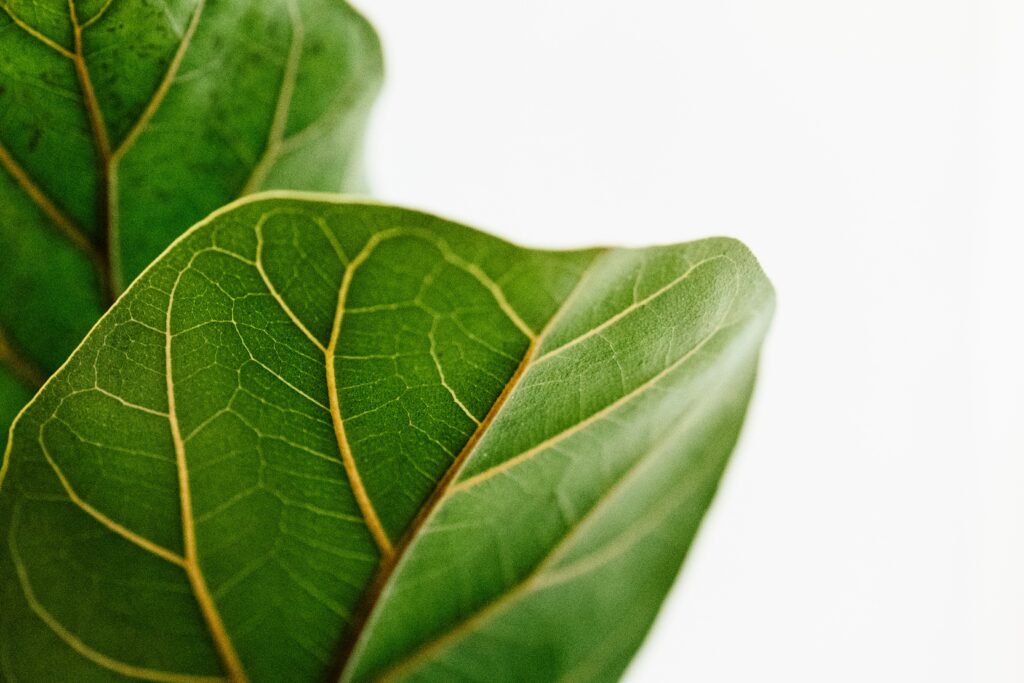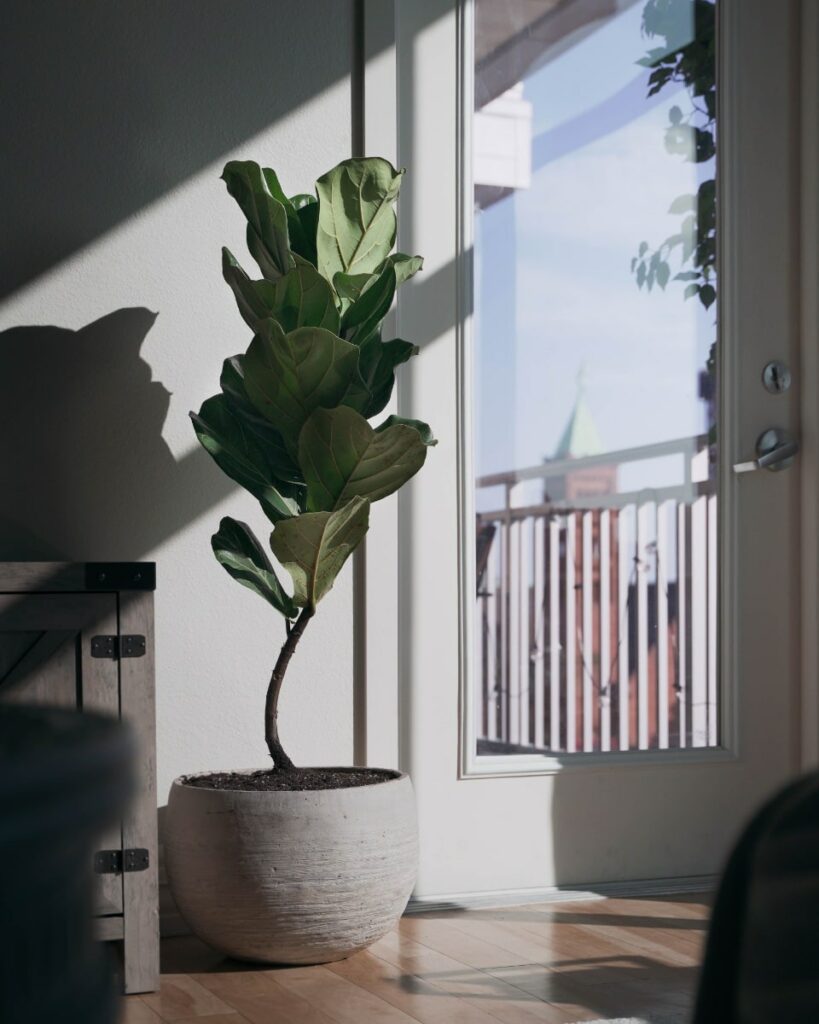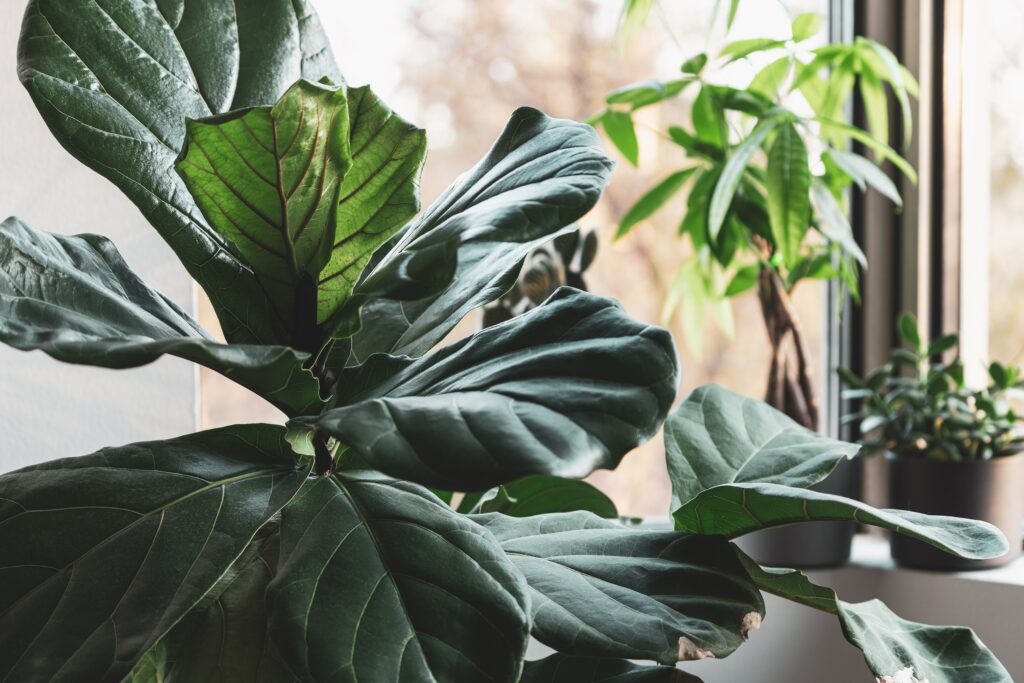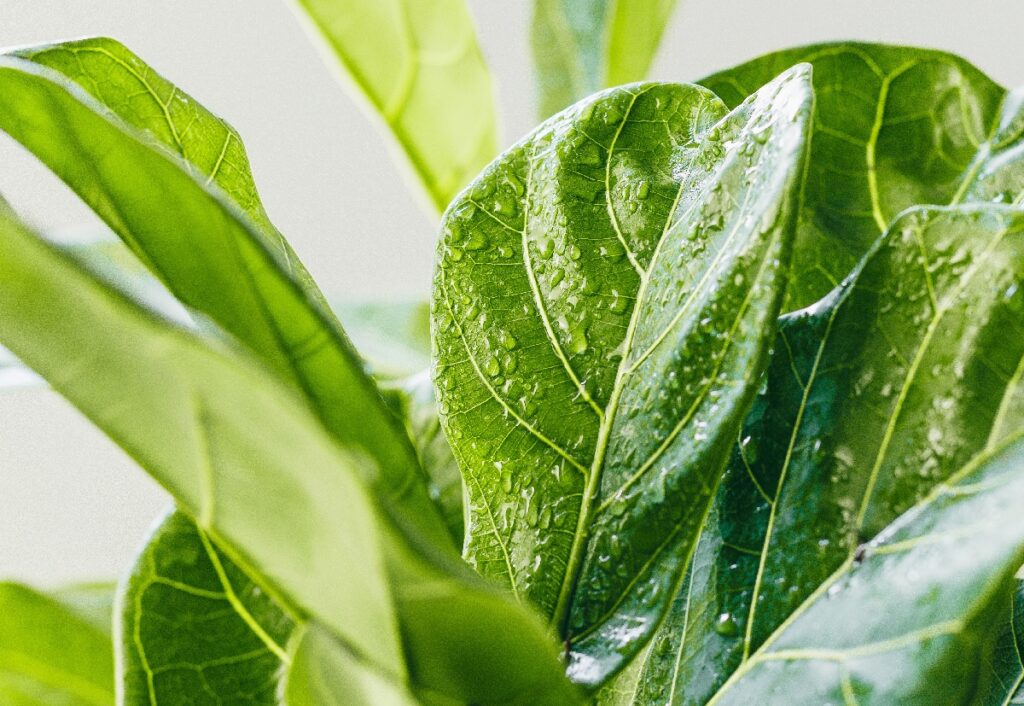Fiddle Leaf Figs, the beloved houseplant of many, are a stunning addition to any room. With their massive foliage and graceful appearance, they can elevate the ambiance of any space. However, as with any plant, there are certain challenges that come with owning a Fiddle Leaf Fig. One of the most common issues that plant owners face is overwatering, and the problems that result. Overwatering can be a death sentence for your Fiddle Leaf Fig, causing root rot, yellowing leaves, and ultimately, the demise of your beloved plant. It is crucial to be able to recognize the signs of overwatering and take action before it’s too late. In this article, we’ll dive into the steps you can take to save an overwatered Fiddle Leaf Fig and prevent future watering catastrophes.
Signs of Overwatering: How to Identify the Issue

Overwatering, a common mistake made by plant owners, can have a detrimental effect on the health of your Fiddle Leaf Fig. To determine if your plant is overwatered, there are a few signs to look out for.
One of the first signs of overwatering is the yellowing of leaves. If the leaves of your Fiddle Leaf Fig are turning yellow and falling off, it could be a sign that you are watering it too much. Overwatering can cause the roots to become waterlogged, leading to root rot and ultimately, the death of your plant.
Another sign of overwatering is wilting leaves. If the leaves of your Fiddle Leaf Fig are wilting and drooping, it could be a sign that the roots are not getting enough oxygen due to being waterlogged. This can cause the leaves to become limp and eventually fall off.
In addition, you may notice that the soil around your Fiddle Leaf Fig is constantly damp or soggy. This is a clear indication that you are watering your plant too much. Overwatering can cause the soil to become compacted, preventing air from reaching the roots and leading to root rot.
If you observe any of these signs, it is crucial to take action to save your Fiddle Leaf Fig. In the next section, we will discuss how save an overwatered Fiddle Leaf Fig by proactively taking steps to assess your plant.
Assessing the Damage: Checking the Roots and Soil
The initial step in rescuing an overwatered Fiddle Leaf Fig is to evaluate the damage. This requires a thorough examination of the roots and soil to determine the extent of the issue.
To assess the roots, carefully extract the plant from its container and scrutinize the roots. Healthy roots should be sturdy and white, while damaged roots may appear soft, brown, or black. If the roots are damaged, it may be necessary to trim them to prevent further harm to the plant.
Following that, scrutinize the soil. Overwatering can cause the soil to become waterlogged, which can lead to root rot and other issues. To check the soil, insert a finger into the soil up to the second knuckle. If the soil feels damp or soggy, it is likely overwatered.
If both the roots and soil are damaged, it is critical to act quickly to save the plant. This may necessitate repotting the plant in fresh, well-draining soil and trimming any damaged roots. It is also crucial to adjust the watering schedule to save an overwatered Fiddle Leaf Fig.
Repotting: Choosing the Right Pot and Soil

Repotting your Fiddle Leaf Fig can be a daunting task, but it’s necessary if you’ve overwatered it. The first step is to choose the right pot, but beware of selecting one that’s too large, as it can lead to overwatering again.
Equally important is selecting the right soil mix. A well-draining soil mix is crucial to prevent root rot, which can be disastrous for your plant. You can create your own soil mix by combining potting soil, perlite, and peat moss in equal parts.
When it’s time to repot, gently remove the plant from its current pot and untangle any roots that may be tangled. Then, place a layer of soil at the bottom of the new pot and position the plant in the center. Fill in the remaining space with soil, but be sure to leave about an inch of space at the top for watering.
After repotting, give your Fiddle Leaf Fig a good watering and place it in a bright, indirect light. Keep an eye on the soil moisture level and only water when the top inch of soil feels dry to the touch. With proper care, your Fiddle Leaf Fig should recover from overwatering and thrive in its new pot.
Watering: Adjusting Your Watering Schedule
When it comes to saving an overwatered Fiddle Leaf Fig, there are a few crucial steps you need to take. The first step is to assess the soil moisture level. This can be done by sticking your finger about an inch into the soil. If it feels wet or damp, hold off on watering. However, if it feels dry, it’s time to water.
The next step is to adjust your watering frequency. Fiddle Leaf Figs prefer to dry out slightly between waterings, so it’s important to aim to water only when the top inch of soil feels dry. Depending on your climate and the size of your plant, this could mean watering once a week or once every two weeks.
When it comes time to water, make sure to give your Fiddle Leaf Fig a thorough soak. This means watering until it starts to drain out of the bottom of the pot, ensuring that the entire root ball gets hydrated.
Last, consider the type of water you’re using. Fiddle Leaf Figs are sensitive to chemicals and minerals in tap water, so it’s best to use filtered or distilled water. If you must use tap water, let it sit out overnight to allow the chlorine to dissipate.
By following these tips and adjusting your watering schedule, you can help your overwatered Fiddle Leaf Fig recover and thrive. Remember, overwatering is the most common cause of Fiddle Leaf Fig problems, so it’s crucial to get this right to hopefully save your overwatered Fiddle Leaf Fig.
Pruning: Trimming Back Damaged Leaves and Branches
If you’ve been overwatering your Fiddle Leaf Fig, it’s highly probable that some of its leaves and branches have suffered damage. To rescue your plant, it’s crucial to trim back any damaged leaves and branches.
Begin by scrutinizing your plant and pinpointing any leaves or branches that are yellow, brown, or mushy. These are telltale signs of overwatering and must be removed. Use a pair of clean, sharp pruning shears to make clean cuts at the base of the damaged leaves or branches.
It’s important to bear in mind that you should only remove the damaged leaves and branches, not healthy ones. If you remove too many healthy leaves, your plant may become stressed and more vulnerable to disease.
After pruning, your Fiddle Leaf Fig may appear a bit bare, but don’t fret. It will soon start to sprout new leaves and branches. In fact, pruning can actually stimulate new growth and expedite your plant’s recovery.
Remember to dispose of any pruned leaves and branches properly. Do not compost them, as they may contain harmful bacteria that could spread to other plants. Instead, seal them in a plastic bag and dispose of them in the trash.
By pruning your overwatered Fiddle Leaf Fig, you can help it recover and flourish once again. Just make sure to adjust your watering habits to prevent future overwatering and keep your plant in good health.
Fertilizing: Providing Nutrients for Recovery
Once you’ve successfully drained the excess water from your overwatered Fiddle Leaf Fig, it’s time to provide it with the necessary nutrients to aid in its recovery. Fertilizing your plant is a crucial step in helping it regain its strength and promoting new growth.
But, not all fertilizers are created equal. It’s important to choose a high-quality fertilizer that is specifically formulated for Fiddle Leaf Figs. Look for a balanced fertilizer with equal amounts of nitrogen, phosphorus, and potassium. These three nutrients are essential for plant growth and development.
However, be careful not to overdo it. Over-fertilizing can be just as harmful as overwatering. So, follow the instructions on the fertilizer package carefully. Typically, you should fertilize your Fiddle Leaf Fig once a month during the growing season (spring and summer) and reduce fertilization during the dormant season (fall and winter).
Before fertilizing, make sure to water your plant thoroughly. This will help prevent fertilizer burn and ensure that the nutrients are evenly distributed throughout the soil. And, if you really want to give your Fiddle Leaf Fig a boost, consider supplementing with other nutrients like Epsom salt or fish emulsion.
But, don’t forget that fertilizing is just one part of the recovery process for an overwatered Fiddle Leaf Fig. You also need to address any underlying issues, such as improper drainage or potting soil, to prevent future problems. With proper care and attention, your Fiddle Leaf Fig can thrive once again.
Monitoring Progress: Tracking Growth and Health

When it comes to saving your overwatered Fiddle Leaf Fig, there are a few necessary steps to take. However, it’s not enough to just take those steps and call it a day. You need to monitor your plant’s progress to ensure that it continues to thrive. But how do you do that? Well, one of the best ways is by tracking its growth and health.
Let’s start with the leaves. Healthy leaves should be a vibrant green color and have a smooth texture. But what if they’re not? What if you notice discoloration, spots, or wilting? These could all be signs that your plant is still struggling. And what about new growth? If your Fiddle Leaf Fig is recovering well, you should see new growth within a few weeks. But what if you don’t? What if there’s no new growth?
Moving on to soil moisture. Checking the soil moisture regularly is another way to monitor your plant’s progress. Stick your finger about an inch into the soil to see if it feels dry or moist. But what if it’s neither? What if it’s somewhere in between? And what if the soil is still wet? Does that mean you need to adjust your watering schedule? And what if the soil is too dry? Does that mean you need to water your plant more frequently?
Last, consider investing in a moisture meter. This can be especially helpful if you’re new to caring for plants or if you tend to overwater them. But what if you’re not new to caring for plants? What if you’re an experienced plant parent? Do you still need a moisture meter?
By monitoring your Fiddle Leaf Fig’s growth and health, you can ensure that it continues to thrive and bring beauty to your home for years to come. But monitoring isn’t always easy. It requires attention to detail and a willingness to adapt and adjust. So, are you up for the challenge?
Preventing Future Overwatering: Tips for Proper Care
Now that you have successfully rescued your overwatered Fiddle Leaf Fig, it’s imperative to take measures to prevent it from happening again. Here are some tips for proper care to ensure your plant stays healthy and happy:
1. Water only when the top inch of soil is dry.
Stick your finger into the soil to check for moisture. If it feels dry, it’s time to water. If it’s still moist, wait a few more days. This will help you avoid the dreaded overwatering that can lead to root rot and other issues.
2. Use a well-draining potting mix.
Fiddle Leaf Figs prefer soil that drains well and doesn’t hold onto excess moisture. Look for a mix that contains perlite or vermiculite to improve drainage. This will help ensure that your plant’s roots don’t become waterlogged and suffocate.
3. Choose a pot with drainage holes.
This will allow excess water to escape and prevent it from sitting in the bottom of the pot. Without proper drainage, your plant’s roots can become waterlogged and start to rot.
4. Don’t let your plant sit in standing water.
If your pot doesn’t have drainage holes, make sure to empty any excess water from the saucer underneath the pot. This will help prevent your plant from drowning in its own excess water.
5. Monitor humidity levels.
Fiddle Leaf Figs prefer a humid environment, but too much moisture can lead to overwatering. Use a humidifier or place a tray of water near your plant to increase humidity levels. This will help ensure that your plant stays healthy and happy without becoming waterlogged.
By following these tips, you can help prevent future overwatering and keep your Fiddle Leaf Fig healthy and thriving. Remember, it’s always better to underwater than overwater, so err on the side of caution when it comes to watering your plant. With a little bit of care and attention, your Fiddle Leaf Fig will continue to thrive for years to come.
Conclusion: Celebrating Your Fiddle Leaf Fig’s Recovery

Wow, what an accomplishment! You have successfully nursed your overwatered Fiddle Leaf Fig back to health. It takes a great deal of patience, care, and attention to detail to revive a plant that has been overwatered, but the results are truly worth it.
As you bask in the glory of your Fiddle Leaf Fig’s recovery, it is important to remember that the proper care is crucial to its continued success. This includes watering it only when the top inch of soil is dry, providing it with adequate sunlight, and ensuring it is not exposed to drafts or extreme temperatures.
By providing your Fiddle Leaf Fig with the right care, you can ensure that it will continue to thrive and grow, adding beauty and life to your home. Take pride in the fact that you have saved a beloved plant and helped it to flourish once again. With any luck, it will be a staple for years to come and tower over you!
Frequently Asked Questions
How do I know if my Fiddle Leaf Fig is overwatered?
Overwatering can cause the leaves of your Fiddle Leaf Fig to turn yellow or brown, and the soil may feel constantly damp or waterlogged. The plant may also show signs of root rot, such as a foul odor or mushy roots.
What should I do if I suspect my Fiddle Leaf Fig is overwatered?
If you suspect your Fiddle Leaf Fig is overwatered, the first step is to stop watering it immediately. Allow the soil to dry out completely before watering again. You may also need to repot the plant in fresh, well-draining soil to prevent further damage.
How often should I water my Fiddle Leaf Fig?
Fiddle Leaf Figs prefer to be kept on the drier side, so it’s important not to overwater them. Water your plant only when the top inch of soil feels dry to the touch. This may be once a week or once every two weeks, depending on the humidity and temperature in your home.
What kind of soil should I use for my Fiddle Leaf Fig?
Fiddle Leaf Figs prefer well-draining soil that allows water to flow through easily. A good mix for Fiddle Leaf Figs is equal parts peat moss, perlite, and potting soil. Avoid using heavy soils that retain too much moisture, such as garden soil or clay soil.
Can I save an overwatered Fiddle Leaf Fig?
Yes, it is possible to save an overwatered Fiddle Leaf Fig if caught early enough. Stop watering the plant immediately and allow the soil to dry out completely. If the plant is severely damaged, you may need to repot it in fresh soil and trim away any damaged roots or leaves.

